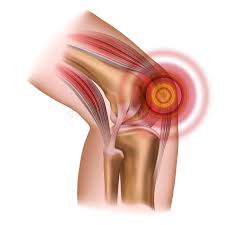
Patellar Tendonitis and Jumper's Knee: Everything You Need to Know
Share
Patellar tendonitis, also known as "jumper's knee," is a condition that affects the kneecap and surrounding tendon. The patellar tendon is a thick, fibrous band of tissue that connects the kneecap (patella) to the shinbone (tibia). It is one of the strongest tendons in the body and helps to extend the leg during activities such as walking, running, and jumping. Patella tendonitis is a condition that occurs when this tendon becomes inflamed or irritated. The condition is most common in athletes who participate in high-impact sports such as basketball, soccer, and football. However, non-athletes can also develop patella tendonitis if they overuse their knees during activities such as running or stair climbing.

Patella Tendonitis Symptoms
The most common symptom of patella tendonitis is pain around or behind the kneecap. This pain is usually worse when walking up stairs or after sitting for long periods of time. Other symptoms include:
- pain when bending the knee
- stiffness in the knee
- weakness in the knee
- creaking or cracking sound when moving the knee
- swelling around the kneecap
- redness around the kneecap
Causes of Patella Tendonitis
Patella tendonitis is typically caused by overuse or repetitive stress on the knee. This can occur from playing sports or participating in other physical activities that put stress on the joint. Other causes include:
- Rapid increase in physical activity level
- Weakness in the muscles around the knee
- Poor alignment of the kneecap

Risk Factors for Patella Tendonitis
There are several factors that can increase your risk of developing patella tendonitis, including:
- Age: The risk of developing patella tendonitis increases with age. This is likely due to the natural weakening of tendons with age.
- Gender: Females are more likely to develop patella tendonitis than males. This may be due to hormones or differences in leg muscle strength.
- Obesity: Being overweight or obese puts additional stress on the knees and can lead to patella tendonitis.
- Flat feet: Having flat feet can place extra stress on the knees and lead to paternally tendonitis.
- Previous injury: If you have previously injured your knee, you are more likely to develop patellar tendonitis in that knee again.

Treatment for Patella Tendonitis
Non-surgical treatment options are typically first recommended for patellar tendonitis. These options include rest, ice, and physical therapy. Physical therapy may involve exercises that stretch and strengthen the muscles around the knee joint. These exercises are used to rehabilitate your knee joint by using strengthening exercises focused on building up your quads, glutes, hamstrings, and calf muscles in order to improve range of motion and flexibility. Exercises should begin by gradually increasing reps, sets, and weight as tolerated. In some cases, a doctor may prescribe medication to help relieve pain and swelling associated with the injury. Surgery is only recommended if nonsurgical treatments fail to relieve symptoms after several months' time has passed.
If you think you might have a patellar injury, it's important to see a doctor so they can give you an accurate diagnosis. Once you know what kind of injury you're dealing with, you can start treating it accordingly and get back to your active lifestyle as soon as possible!
